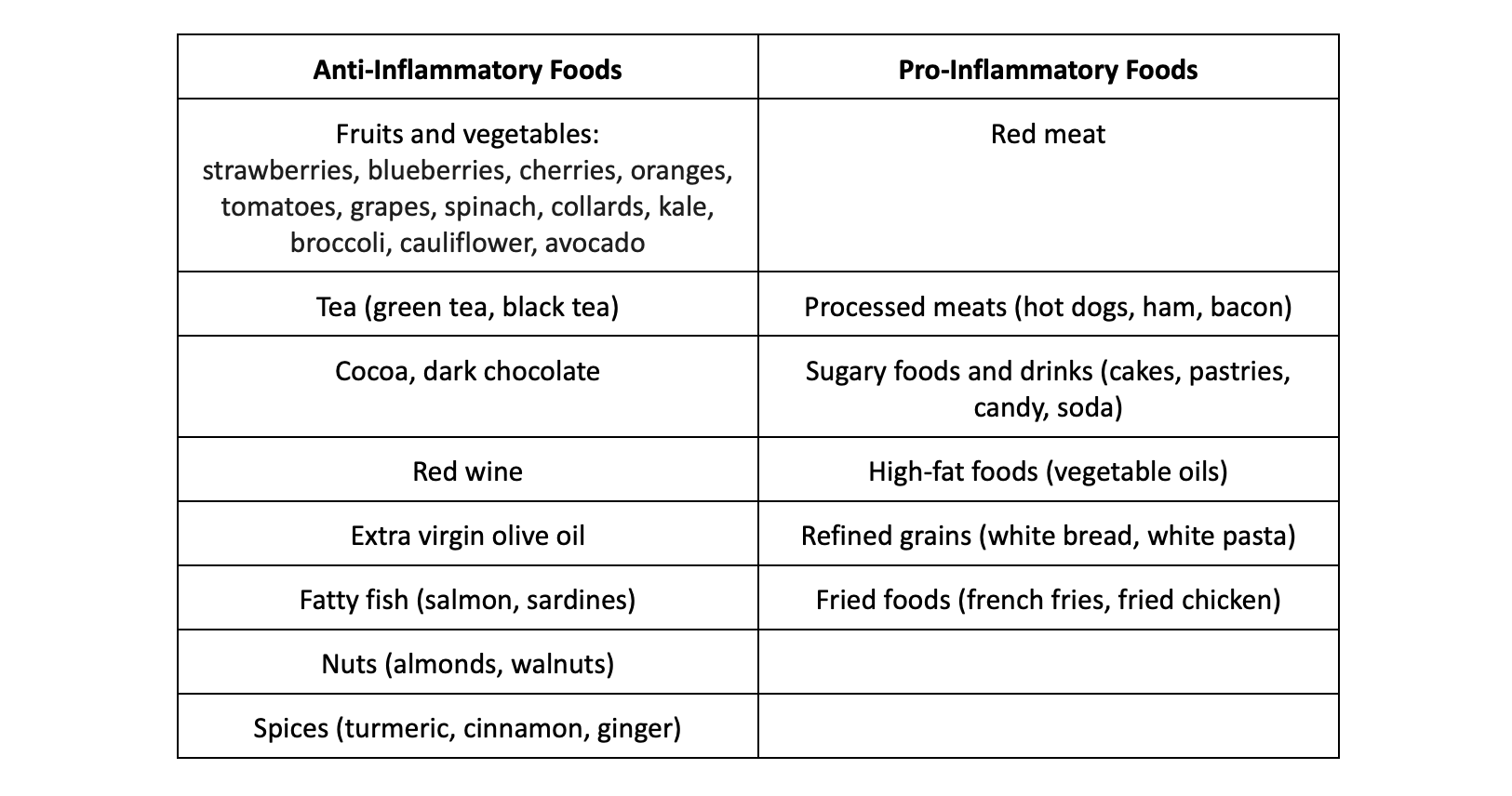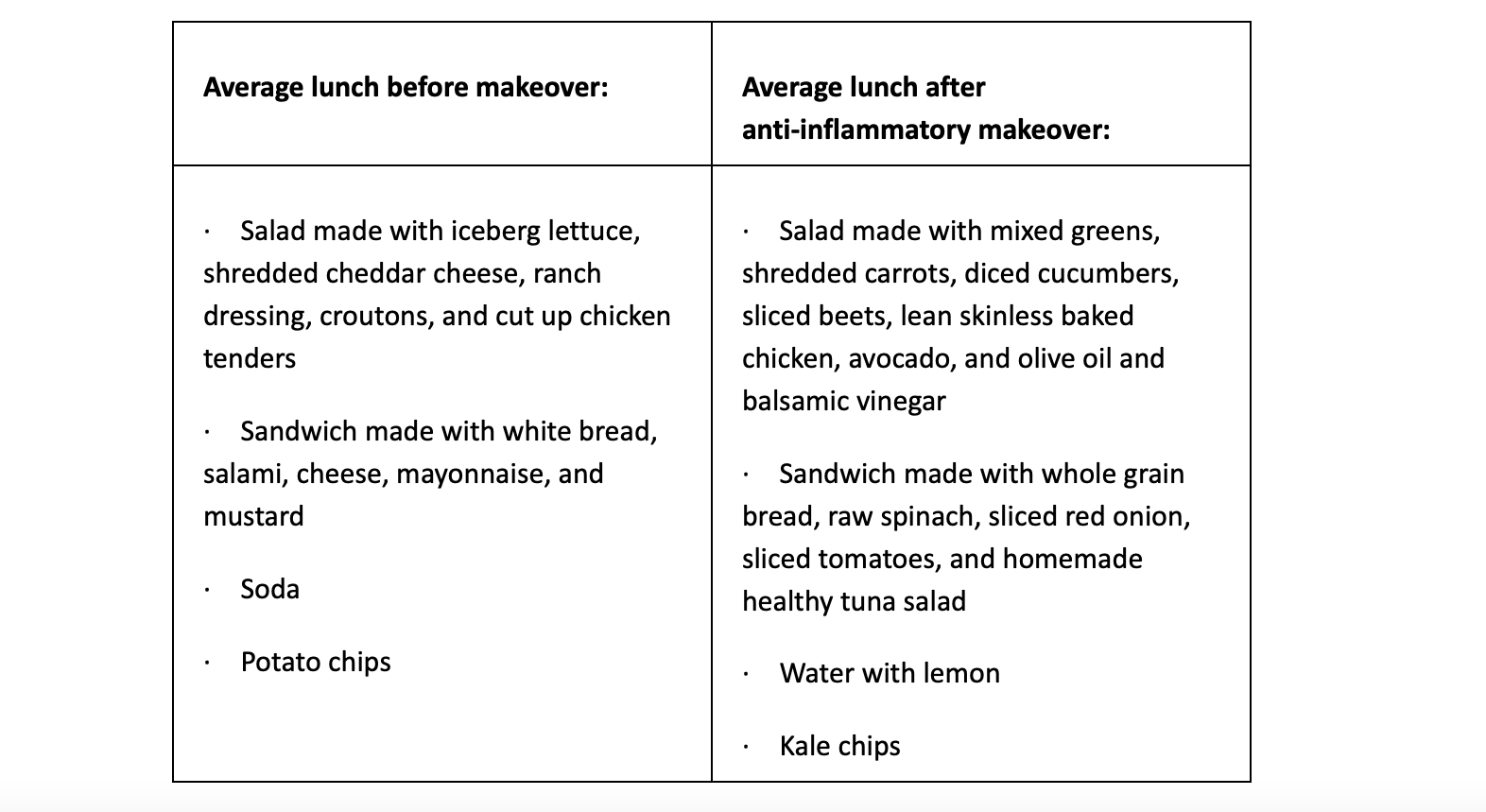Inflammation in the body is necessary for our survival, but too much can be pretty harmful. Learn how inflammation makes its mark, and the best way to eat to keep it at bay.
If the sky-high popularity of anti-inflammatory supplements lining the shelves is any indication, a pressing goal among today’s health aficionados is pretty clear: lower the body’s inflammation for greater wellbeing.
What is inflammation?
Inflammation certainly gets a bad rap, but without it, we could not live.
In its most basic sense, inflammation is the protective mechanism that goes into gear when our immune system senses an injury or invader.
Take a sprained ankle. When an ankle is injured, it swells - or becomes inflamed.
This happens because the immune system releases chemicals and white blood cells that allow more blood to travel to the injury by expanding the small blood vessels at the ankle. The site of the injury also attracts immune system cells to assist with healing.
Or have you ever been home sick with the flu? The achy muscles and joints and general cruddy feeling you experienced are the inflammatory responses brought on to fight off the virus.
Acute vs. chronic inflammation
Most of us have survived injuries and nasty viruses, so we have experienced the effects of inflammation first hand.
These types of inflammatory events, the ones we can see and feel, are called acute. They can generally be treated with over the counter anti-inflammatory medications or steroids, and in time they disappear.
But sometimes inflammation is not apparent and sticks around. Inflammation lingers when the immune system continues to release chemicals because it believes it is under constant attack. This type of inflammation is called chronic.
Chronic inflammation is worrisome because after a period of time, the white blood cells can begin to attack neighboring healthy organs and tissues, wreaking havoc on the body in multiple ways. Chronic inflammation is associated with several diseases like cancer, diabetes, cardiovascular disease, non-alcoholic fatty liver disease, as well as autoimmune disorders.

How can inflammation promote disease?
There is still a lot to learn about the exact causes of chronic inflammation.
One thing we do know, though, is that inflammation appears to play an important role as a contributor to a number of diseases.
Heart disease and stroke. People with a history of heart disease and stroke are found to have higher levels of inflammation in their body. It is suggested that inflammation and blockages in the arteries form as a response to the buildup of cholesterol plaque in blood vessels, substances that the body considers foreign. When an artery is walled off to the heart, it causes a heart attack, whereas a blocked artery in the brain causes an ischemic stroke.
Diabetes. Obesity has long been linked to type 2 diabetes, and growing evidence shows that obesity-related inflammation may have an impact. Obesity is characterized by the accumulation of fat around the belly and major organs in the abdomen. The fat cells located around this area produce chemicals that cause inflammation, leading to insulin resistance and type 2 diabetes. Inflammation is shown to cause vascular complications and diminished insulin secretion in persons with diabetes as well.
Cancer. The most recent science seems to point to the fact that inflammation can directly cause cancer. Around 20% of cancer-related deaths involve inflammatory responses within the body. Risk factors for cancer are chronic infections from exposure to environmental toxins like cigarette smoke and the presence of chronic inflammatory diseases. Inflammatory cells activate oxidants that can damage and mutate DNA, resulting in the formation of tumors.
Inflammatory arthritis. This autoimmune disease produces inflammation that occurs when the body cannot differentiate between its own healthy tissues and foreign material. In this case, inflammation can affect the joint structures, leading to stiffness, pain, and limited mobility. Other organs and tissues can be affected as well, like tendons, skin, eyes, heart, and lungs.
Inflammatory bowel disease (IBD). IBD describes two conditions, Crohn’s disease and ulcerative colitis, that involve chronic inflammation of the gastrointestinal tract. For people with these conditions, their immune system erroneously induces inflammation to protect against benign environmental triggers. Inflammation can cause abdominal pain, diarrhea, and weight loss, as well as damage to various parts of the gastrointestinal tract.
Which foods promote or reduce inflammation?
As inflammation continues to be studied, one fact remains pretty clear: our food has the powerful capability to quell inflammation.
The opposite is also true. Inflammation-promoting foods can cause inflammatory responses in our bodies too.
A recent 2020 study illustrates this point well. In the study, the diets of more than 210,000 people were followed for up to 32 years. The study found that those who ate high-inflammatory foods such as red meat, processed meat, refined carbohydrates, and sweetened beverages had a 46% greater risk of heart disease and 28% greater risk of stroke than those who ate anti-inflammatory foods like green leafy vegetables, dark yellow vegetables, whole grains, fruit, tea, coffee, and wine.

What makes a food pro-inflammatory or anti-inflammatory?
Foods that promote inflammation are usually ones that contain partially hydrogenated fats, trans fats and are made with refined grains and sugar.
Inflammation-fighting foods are sources of omega-3 fatty acids, monounsaturated and polyunsaturated fatty acids, polyphenols, and dietary fiber.
An effective approach for the prevention of disease is to avoid inflammation-causing foods whenever possible, while mostly eating a wide variety of colorful, non-processed, nutrient-dense foods that naturally keep inflammation to a minimum.

Here is an example of how you can turn an average meal into an anti-inflammatory one:






